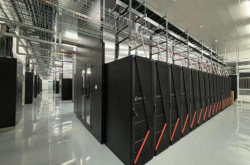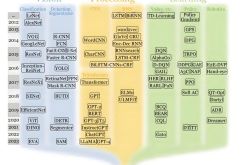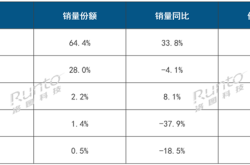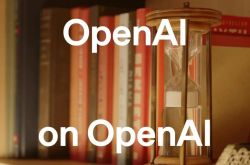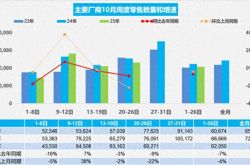Time to Reassess Oracle’s Position
![]() 09/12 2025
09/12 2025
![]() 470
470

Oracle lacks GPUs or proprietary large models. How does it manage to thrive?
By Shen Yan
A financial report has shed light on a significant player in the AI infrastructure landscape.
It's Oracle. In its Q1 FY2026 financial report (covering the period ending August 31), the most notable figure, Remaining Performance Obligations (RPO), surged by 359% to reach $455 billion, significantly surpassing the market consensus of $178 billion. RPO represents Oracle's signed but unrecognized revenue. A rough estimate suggests its order backlog extends over a decade.
The surge in orders is attributed to customers' preemptive purchases of computing resources for AI large models and inference services, driven by computing shortages and extended delivery timelines, which have led to a preference for early order locking.
This figure alone was enough to send capital markets into a frenzy. On that day, Oracle's stock price soared by 36%. Based on the closing price, Oracle's market capitalization increased by $243.877 billion overnight, equivalent to adding the value of three Cambricons (with a market capitalization of RMB 540 billion as of the September 10 closing). This surge briefly catapulted Oracle's founder, chairman, and CTO, Larry Ellison, to the top of the world's richest list, ending Elon Musk's reign of over 300 days.
However, doubts soon surfaced. Oracle lacks GPUs or proprietary large models. How does it manage to pull this off?
The significant rise in a company with a market capitalization exceeding $600 billion is not merely driven by financial data but by a re-evaluation of Oracle's strategic position in the capital markets. In the AI wave, the entity that controls the bridge between enterprise data and large model inference wields true bargaining power.
Oracle has capitalized on this strategic positioning to achieve a rebirth as an 'established giant.'
1. The Scarcity of Inference
Ellison recounted a story. He once received an unusual call, with the caller stating, 'We will take over all your unused capacity anywhere in the world.'
'It's for inference, not training,' Ellison clarified. 'The demand for inference is enormous, far surpassing the training market. Ultimately, all the money spent on training must translate into products sold, and all of it is inference.'
Three years ago, OpenAI's launch of the groundbreaking GPT-3.5 enabled ordinary people to converse with AI and access answers to all publicly available human information through inference. However, the challenge of combining publicly available information with a company's confidential data for secure inference, ultimately enhancing enterprise efficiency, keeps many business leaders awake at night.
Behind Oracle's explosive performance lies the core demand for cost-effective and data-secure AI cloud tools, a need that Oracle is fulfilling.
During the earnings call, Ellison remarked, 'AI model training is a massive market worth trillions of dollars. But if you look closely, you'll find an even larger market: AI inference. Millions of customers use these AI models to run their businesses. In fact, the AI inference market will be much larger than the AI training market.'
This shift reflects the transition of AI from training to inference and the increasing number of enterprises utilizing AI models for inference.
If NVIDIA dominates the 'training market,' Oracle has chosen the 'inference market.' Together, they form a dual-wheel drive for AI commercialization, with one addressing 'how to build the car' and the other 'how to drive it.' The market's revaluation of Oracle confirms this logic.
The core reason is that Oracle has successfully integrated its long-standing database strengths with the inference demands of the AI era.
Safra Catz stated during the earnings call, 'We make it incredibly easy for customers to connect all their databases directly to the world's most advanced AI inference models—ChatGPT, Gemini, Grok—all exclusively available on Oracle Cloud.'
Imagine Oracle as the world's largest and most secure library, housing countless enterprises' most precious 'collections'—data. It also functions as the library's administrator, setting rules for access, borrowing, and categorization—its database and software systems. Now, this library not only manages its original physical collections but has also expanded into a digital branch, providing next-generation AI researchers and business operators with directly accessible 'knowledge interfaces.'
For a traditional giant long considered to have missed the internet and cloud computing waves, such a reversal is enough to shake the entire industry.
2. AI Revitalizes an Established Giant
Oracle's core value in the AI era lies in its ability, as a traditional database company, to serve as a secure and reliable 'bridge' connecting external large language models (like ChatGPT) with a company's private and highly confidential data (such as financial data, customer information, and supply chain logs).
This ensures that enterprise data remains securely within the company's own Oracle databases, avoiding leaks to external AI firms.
When employees need to solve problems using large language models (LLMs), such as 'How did the first-quarter macroeconomy affect the company's profits?', the question is first sent to the LLM. After understanding, the LLM 'queries' the Oracle database for relevant private data (e.g., this quarter's costs and sales). The database quickly retrieves the most relevant information and provides it to the LLM, which then integrates all internal and external data to generate an accurate and reliable answer.
This means Oracle has transformed from a data storage company into an enterprise's 'intelligent data hub.' Rather than simply expanding computing power, Oracle has upgraded the 'superbrain' within enterprise IT architectures, enabling data to participate in intelligent decision-making processes. This positions it with a stronger barrier than competing on computing power prices.
Oracle's unique approach lies in its intelligent upgrade of databases to naturally fit large language models while offering multi-cloud compatibility, allowing direct integration into AWS, Azure, and GCP systems without requiring customer migration. Additionally, Oracle's cloud infrastructure offers cost advantages, making AI inference more affordable and accessible.
Oracle has evolved from a company merely selling computing power and databases to one capturing the scarce entry point of 'enterprise data + AI inference.' Once customers choose to build this bridge, future AI applications and calls will continuously rely on this pathway.
3. Will Capital Continue to Pay?
In recent years, the capital markets have primarily viewed Oracle as a 'traditional software giant'—stable but lacking imagination. However, this financial report and earnings call have, for the first time, clearly shown investors Oracle's vast potential for future growth.
'We've had an outstanding start to the year,' said Safra Catz.
Oracle's cloud infrastructure (OCL) business is growing rapidly, with an estimated $18 billion for the current fiscal year and projected to reach $114 billion in four years. The surge in RPO to $455 billion indicates that customers have already locked in future purchases. Safra Catz stated, 'Over the next few months, we expect to sign several new multibillion-dollar customers, potentially pushing RPO beyond $500 billion.'
In recent quarters, Oracle has continued to advance multi-cloud database interconnections with Amazon, Microsoft, and Google Cloud. During the quarter, multi-cloud database revenue from these three major cloud providers grew by 1,529% year-over-year. Oracle also plans to deliver 37 additional data centers for these companies, bringing the total to 71 facilities, validating the effectiveness of its model.
Behind these numbers, the market recognizes that Oracle is not merely following the AI wave but occupying a strategically valuable entry point. It has the capability to integrate data with AI, addressing the core challenge of AI commercialization.
For Chinese cloud providers, the implications are clear. Simply emphasizing computing power supply easily leads to price wars. The true strategic position lies in becoming the most trustworthy bridge between enterprise data and AI models.
Oracle's stock price surge is not solely due to revenue growth but because it has convinced the market that, in the AI era, it is the most crucial channel for enterprises and large model companies. Whoever controls this channel holds the initiative in future enterprise intelligence.
Reviewed by Chen Qiulin

